1
2
3
4
5
6
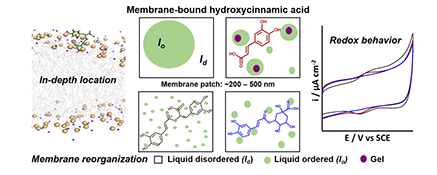
In: H. A. L. Filipe, C. Sousa, J. T. Marquês, D. Vila-Viçosa, A. G. Flor, A. S. Viana, M. S. C. S. Santos; M. Machuqueiro; R. F. M. de Almeida (2018) Differential targeting of membrane lipid domains by caffeic acid and its ester derivatives. Biol. Med., Vol. 115 (232-245); DOI: 10.1016/j.freeradbiomed.2017.12.002.
Featured publication
- Phenolic acids interplay with membrane domains support diverse biological actions
- Lipid bilayer partition depends on phenolic acid structure and membrane cholesterol
- Redox signals of membrane-bound rosmarinic and caffeic acids were clearly detected
- Rosmarinic and chlorogenic acids disturb cholesterol-enriched domains
- Caffeic acid specifically targets sphingomyelin in membrane ordered domains
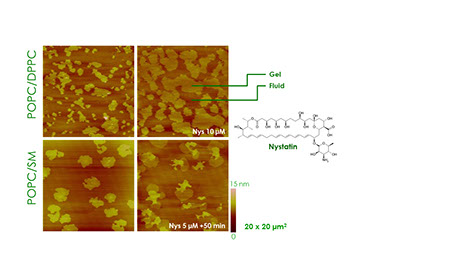
Featured publication
- Nystatin (Nys) is a pore forming broad-spectrum and efficient antifungal drug with significant toxicity in mammalian organisms.
- It is widely accepted that Nys activity and toxicity depend on the presence and type of membrane sterols.
- We now show that the formation and stabilization of Nys aqueous pores occur in the absence of membrane sterols.
- Moreover, we show that the formation of Nys active pores is enhanced by the presence of gel domains and is modulated by the properties and composition of those domains.
In: A. G. Santos, J. T. Marquês, A. C. Carreira, I. R. Castro, A. S. Viana, M.-P. Mingeot-Leclercq, R. F. M. de Almeida, L. C. Silva (2017) The molecular mechanism of Nystatin action is dependent on membrane biophysical properties and lipid composition. Phys. Chem. Chem. Phys., Vol. 19 (30078-30088); DOI: 10.1039/C7CP05353C
Featured publication
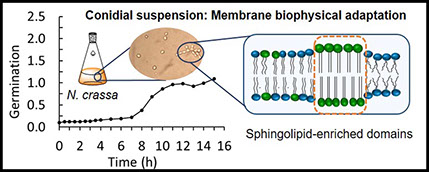
In: Filipa C. Santos, Andreia S. Fernandes, Catarina A.C. Antunes, Filipe P. Moreira, Arnaldo Videira, H. Susana Marinho, Rodrigo F.M. de Almeida. Reorganization of plasma membrane lipid domains during conidial germination. Biochim. Biophys. Acta - Mol. Cell Biol. Lipids, Vol. 1862 (156-166), DOI: 10.1016/j.bbalip.2016.10.011
- Conidia germination includes major reorganization and fluidization of the membrane
- N. crassa conidia lack ergosterol, but contain sphingolipid (SL)-enriched domains
- Those domains are gel-like, melting near growth temperature for N. crassa wild type
- Cell wall-less mutant (slime) unable to form hyphae has more and tighter SL domains
- Slime membrane biophysical properties resemble those of unicellular S. cerevisiae
Featured publication
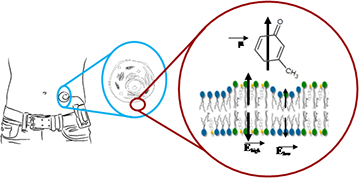
In: T. O. Paiva, A. E. P. Bastos, J. T. Marquês, A. S. Viana, P. A. Lima, R. F. M. de Almeida (2016) m-cresol affects lipid bilayers in membrane models and living neurons. RSC Adv., 2016, 6, 105699-105712.
- The phenolic compound m-cresol interacts with liquid ordered domains, due to an interaction of its dipole moment with the high dipole potential of cholesterol-enriched lipid bilayers.
- This mechanism allows m-cresol to interact with the plasma membrane of mammalian cells, including those with very high cholesterol content, such as neurons, despite their high order and packing.
- A preferential interaction of m-cresol with cholesterol/sphingomyelin-enriched membrane domains affects membrane organization and increases its leakiness, explaining the toxicity of insulin formulations containing m-cresol.
Featured publication
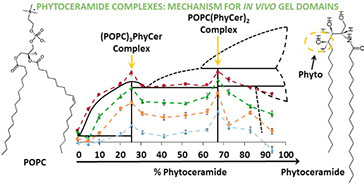
J.T. Marquês, A.M. Cordeiro, A.S. Viana, A. Herrmann, H.S. Marinho, R.F.M. de Almeida, Formation and Properties of Membrane-Ordered Domains by Phytoceramide: Role of Sphingoid Base Hydroxylation, Langmuir, 31 (2015) 9410-9421; DOI: 10.1021/acs.langmuir.5b02550.
- Phytoceramide is the backbone of complex sphingolipids found in plants and fungi, and is also present in several human tissues such as skin.
- The formation of POPC : phytoceramide stoichiometric complexes that display unique biophysical properties was revealed.
- The gel domains that we previously identified in the plasma membane of living yeast cells may share important properties with those stoichiometric complexes.
- Fungal infections are a growing concern in hospitals all over the world. The POPC/phytoceramide binary phase diagram may inspire future antifungal therapies.
- As there is no commercially available vaccine to prevent dengue and Zika, vector control remains the primary method to prevent outbreaks of these diseases. We found that fennel essential oil is a promising natural larvicidal for the control ofAedes (Stegomyia) aegypti (L.), the major dengue and zika mosquito vector
Figure 1. Morphological alteration of Ae. aegypti larvae observed in stereomicroscope (A) and light microscope
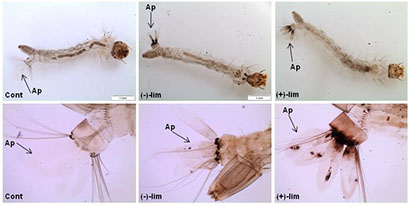
Featured publication
In: Diara Kady Rocha, Olivia Matos , Maria Teresa Novo, Ana Cristina Figueiredo,Manuel Delgado, Cristina Moiteiro; Larvicidal Activity Against Aedes aegypti of Foeniculum vulgare Essential Oils from Portugal and Cape Verde, Natural Product Communications, 2015, 10(4), 677-682.
<
>

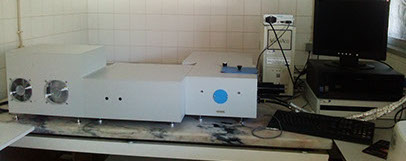
The main goal of our group is to advance the state-of-the art of membrane lipid domains, providing means for improved assessment of their involvement in drug mechanisms of action, pointing directions to develop new preventive and therapeutic strategies.
Biological membranes are generally believed to exist in a fluid regime, where a liquid disordered (ld) phase with low lipid packing and fast lateral diffusion of molecules coexists with a liquid ordered (lo) one displaying higher lipid packing and slightly slower lateral diffusion.
In recent years, however, our studies have challenged the dogma that another lipid phase, the gel or solid ordered phase, is not physiologically relevant, due to the very slow lateral diffusion of its components. We have proved that gel domains are present in the plasma membrane of growing yeast cells through the use of fluorescent probes that exhibit different fluorescence parameters in each lipid phase. This finding is now supported by independent studies in other laboratories.
The relevance that ordered domains may play in the organization and function of biomembranes, and their implication in drug modes of action, and antidrug mechanisms of resistance, both in infectious agents and in cancer cells, are the core of our research.
A combination of protein ion channels embedded in cell membranes controls ion concentrations in the different sub-cellular compartments. Dysfunctions in these channels are currently linked to certain pathologies, such as cystic fibrosis, as well as learning and memory disabilities, such as in Alzheimer's disease. In our group, we develop synthetic transporters with potential for possible replacement therapeutics for malfunctioning membrane ion channels, or alternatively, as anticancer and antimicrobial agents. Considering that lipid domains and ion fluxes are intimately related, the experimental study of ion transport in the membrane models developed by the group will contribute to the major goal of our group. Many of the compounds developed by us are from natural origin, namely, essential oils from aromatic and medicinal plants, seeking the valorization of Portugal natural resources; others are bioinspired and synthesized using efficient and environmentally friendly synthetic approaches, contributing to the Thematic Line "Chemistry and biochemistry for a clean environment".
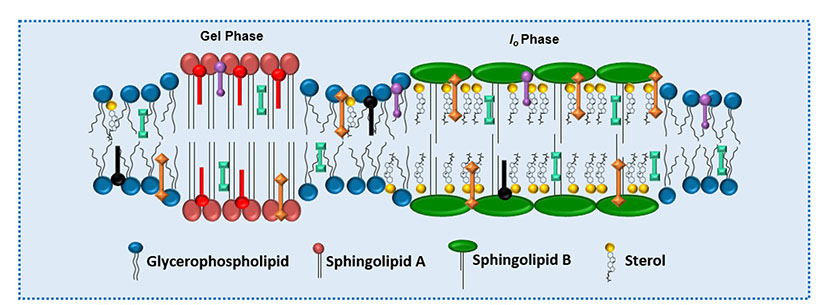
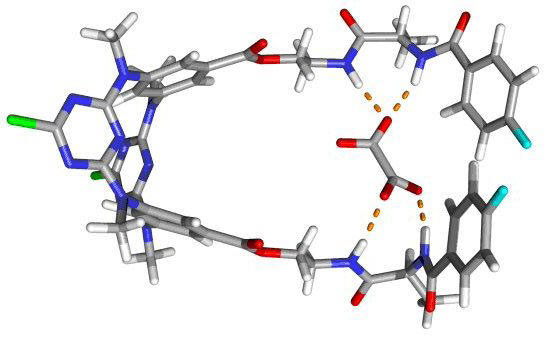
Departamento de Química e Bioquímica
Faculdade de Ciências da UL
Molecular Biophysics Lab.
Campo Grande, Ed. C8 Piso 4
1749-016 Lisboa, Portugal
